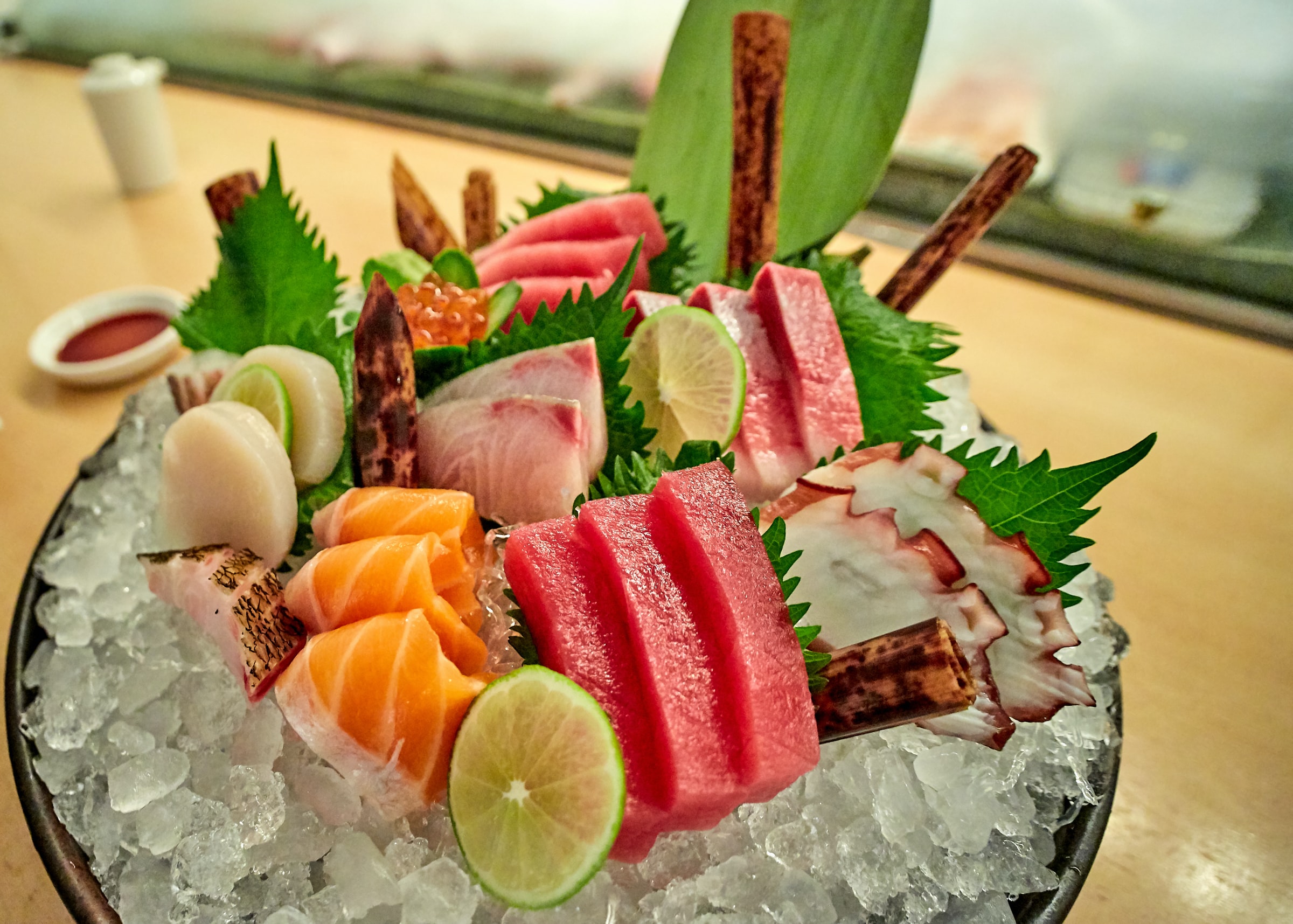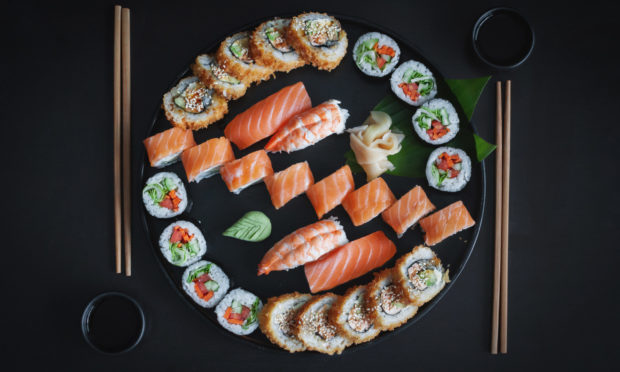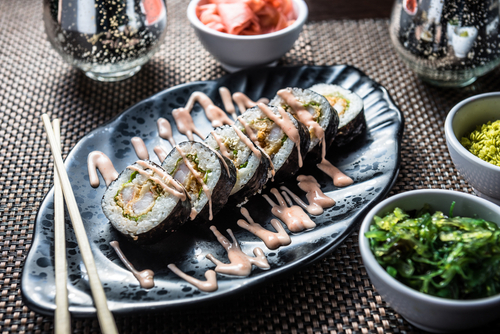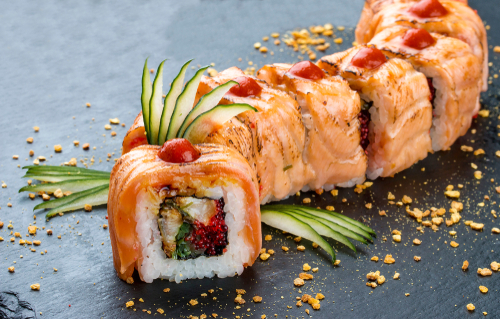Do you know your maki from your nigiri? Julia Bryce takes a closer look at the different styles of sushi and finds out what to expect when ordering them.
When it comes to ordering sushi, it can be hard at times to know exactly what you’ve asked for.
While some dishes are quite similar, others associated with sushi aren’t actually classed as sushi at all.
Sushi rice (vinegared rice) is the main component to the popular Japanese dish, and will usually be served with fresh seafood and vegetables, and will also occasionally feature tropical fruit.
International Sushi Day takes place today and for anyone looking to make their own, or order in some from their favourite eateries, our guide to sushi will help you navigate through the menu so you can order (or make) exactly what you want.
From nigiri to maki, not to mention chirashi and temaki, we uncover what is what in our sushi guide.
Nigiri
A thick rectangle of sushi rice is usually topped with a slice of fish or seafood. The rice is moulded by hand and usually comes served with two pieces – however this can differ from establishment to establishment.
Not all nigiri is raw, however it is more common.
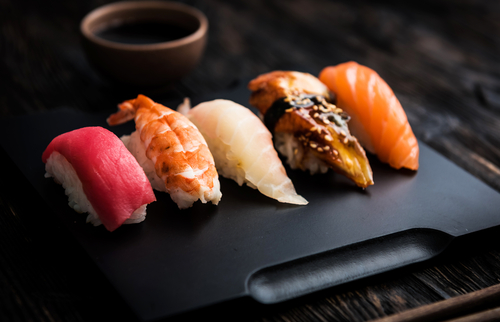
Maki
When the majority of us think of sushi rolls, maki is what you will probably envision. The filling is usually encased with rice which is then wrapped in a nori (edible seaweed) and then cut into pieces. You will be served around six to eight pieces.
The filling will also normally consist of raw vegetables and raw fish, and the whole thing is made by using a bamboo mat to roll it up.
While most maki comes wrapped in seaweed, some may be finished off with things like roasted sesame seeds.
Hosomaki is smaller rolls made with just one single filling – this can be either fish or vegetables.
Uramaki is very similar, too, however, the rice is on the outside and the seaweed is wrapped around the filling.
Temaki
Similar to maki, temaki is sushi that has been rolled up into a cone shape. Housing rice and a range of fillings, it is usually hand rolled. While these are not as easy to share with others like cut up maki rolls, they are great for popping in your mouth and are very delicious.
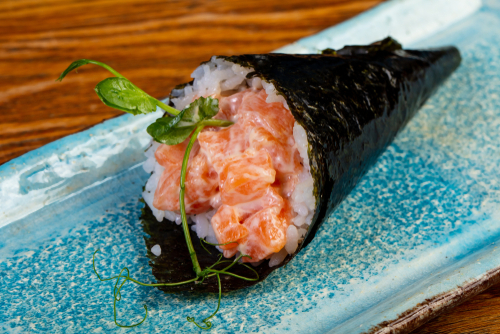
Sashimi
This style mainly consists of sliced fish or shellfish served on its own. It is technically not classed as sushi, but is featured in many sushi bar/restaurants menus. Simplistic, sashimi is sliced in long rectangular slices and is rich in flavour. Wasabi, ginger and soy sauce is usually served alongside it.
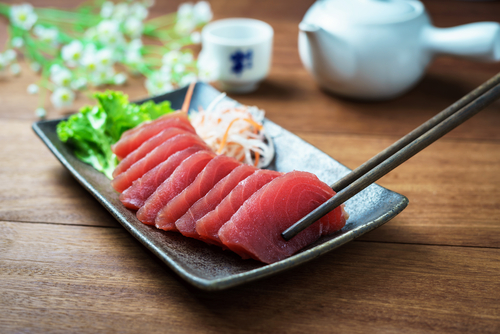
Chirashi
A bowl of vinegared rice is topped with a mix of raw fish (sashimi) and a range of garnishes. Easy to make, chirashi means “to scatter” which the chef does so by placing items all over the one-meal bowl.
You can also make this completely vegetarian if desired.
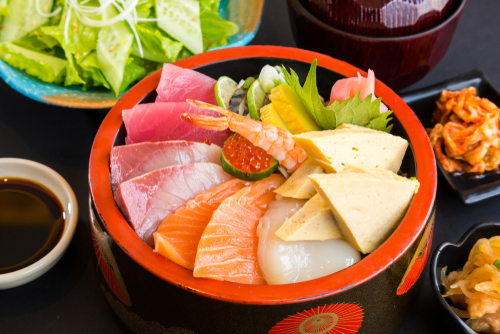
Sushi rolls
More of a Western take on Japanese maki sushi, these rolls come in all sorts of flavours, with many coming drizzled in different sauces
There’s a whole range of rolls including California, tempura, rainbow, spicy tuna, caterpillar, surf and turf, volcano, dragon and spider to name a few, and they usually come with at least 8 to twelve pieces, with some having up to 14/16.
They aren’t classed as traditional sushi, but many eateries have them on their menu for customers to try.
Top tips for eating sushi:
- Try use chopsticks to eat sushi and if you are sharing, you should use the back end of them to select your food. You can also use your hands, if needed.
- Don’t eat the pickled ginger with your sushi. The ginger is there as a palate cleanser between courses/styles and to help aid digestion. It is not to be mixed when eating the sushi itself.
- If you dip your sushi into provided soy sauce, be sure to do so fish side down. The vinegar rice used to make sushi is already seasoned and the rice will break.
- Eat the sushi in one bite. Things can get messy if you don’t.
- If it doesn’t come served with wasabi or soy sauce, don’t ask for it. The chef knows best in these cases and if they want you to eat the sushi with it, they will provide it.
- When ordering, order a few items at a time. Be sure to try different things – but ordering a few things means you can adapt to picking things you enjoy much more easily.
- Omakase style dining is when you leave your choices up to the chef. You will set a budget and they will serve you a selection of dishes. Some establishments will ask what you do/don’t like, but always be sure to alert them of any allergies you have.
